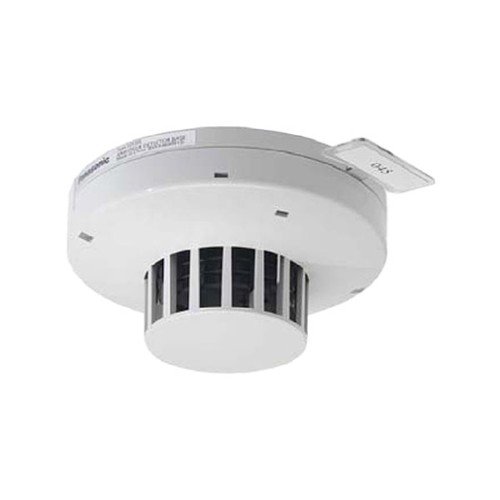Multi-Sensor Photoelectric and Thermal
The multi detector contains one photo-electric (optical) smoke detector and one heat detector within the low profile housing. The latest IC technology will secure the highest reliability possible. It has unleaded soldering. The smoke detection chamber has a high-efficient optical system with an infrared light LED and a photodiode with two lenses. Light reflection is used to detect smoke, which enters the detection chamber through an insect filter and an optical labyrinth. The heat sensing element is a thermistor. The detector is supplied with two red LEDs that will be blinking when the detector has activated alarm. It also has a green polling LED. The detector is plugged in an analogue base (3312 / 4313 / 3379). The COM loop is connected to the base, which also can have terminals for an external LED, e.g. BARIL. The detector is intended for indoor use in dry premises and in the systems FT128V2 and FT1020G3.
- Service signal at fixed level of contamination
- New advanced algorithms and functions and yet compatible with older FT Systems
| Model Number: | 4400W |
| Voltage Primary: | 24(V DC) |
| Ambient Temp (C°) Operating Storage: | -10 to +50 |
| Ambient humidity (% RH): | max. 95, non condensing |
| Ingress Protection Rating (estimated): | IP51 |
| Compliance: | AS7240-7, AS7240-5; EN54-7:2000 + A1:2002 + A2:2006 (smoke) and EN54-5:2000 + A1:2002 Class P (heat) |
| Weight - (g): | 75 |
| Colour: | Grey (N8, Munsell colour code) |
| Construction: | Polycarbonate Alloy |
| Approvals: | AS7240-7, AS7240-5; EN54-7:2000 + A1:2002 + A2:2006 (smoke) and EN54-5:2000 + A1:2002 Class P (heat) |
Artificial Intelligence uses combined smoke and heat sensing for the fire judgement, as well as variable sensitivity and time delay based on the smoke and temperature changes just before the alarm level is reached. This will secure the real fire alarms and reduce the not wanted nuisance alarms.
A learning function will after a learning period adapt an alarm algorithm suitable for the smoke and temperature conditions where the detector is located, i.e. an alarm algorithm for:
Normal area (default)
Heater area (no rate-of-rise alarm)
Smoke-steam area (longer delay time)
Cooking-welding area (lower sensitivity & longer delay time)
Clean area (higher sensitivity)

















